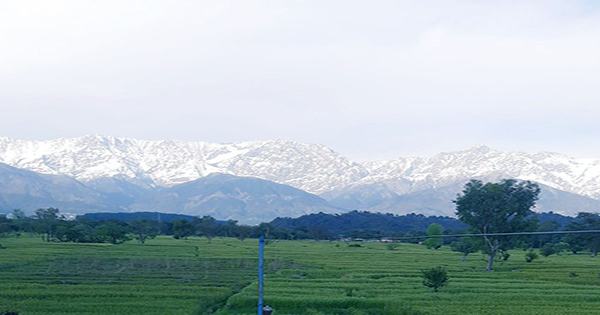The lockdown has now significantly reduced air pollution levels in India with 1.3 billion inhabitants, revealing a large layer of silver in the form of ice-covered Himalayan peaks in the coronavirus epidemic. In places like Jalandhar in Punjab, the fog has cleared so much that the dusty hills – 160 kilometers (100 miles) away – became visible for the first time in decades.
Locals are coming down on social media to share pictures of distant mountains, with many claiming that this is the first time they have seen a glimpse of this mountain from their city. India’s urban centers are notorious for their high levels of air pollution. A global report conducted last year by IQ Air revealed that the country is among the ten most affected cities in the world when it comes to fine particulate matter.
These microscopic particles, also known as PM2.5, measure less than 2.5 micrometers in diameter and anyone who breathes into them can enter their lungs and cardiovascular system, leading to potentially serious health problems.
Nevertheless, a new report by the Central Pollution Control Board of India has revealed a massive reduction in air pollution across the country since March 25 lockdown took effect. For example, IQ Air’s 2012 report ranked Ghaziabad as the most polluted city in the world, yet the Air Quality Index (AQI) dropped by 57% in the first three days of the national lockdown.
Delhi, meanwhile, has seen similar developments across the country at the same time, with AQI 162 falling from fall2 to just 79 in the same period. “The data shows that the average AQI [Air Quality Index] of Indian cities was 115 between March 16 and 24,” the report said, adding that “the average AQI dropped to 75 in the first three days of the Taliban.”
The northern states have seen great improvements, such as Punjab and Rajasthan, both of which have many industrial centers that have caused enough air pollution to block the Himalayas. In the first three days of India’s lockout, Rajasthan’s Bhiwadi saw an 80 percent drop in its AQI, while Punjab’s steel producer Mandi Gobindgarh saw a 64 percent drop over the same period, India Today reported.
The global spread of the coronavirus has led to a massive decline in global transport and industry, resulting in clean air in many large cities and highly populated areas. In early March, NASA satellites dropped significant levels of nitrogen dioxide over China as the country’s land became stagnant and emissions decreased. At the time of writing, about 9,240 confirmed coronavirus cases have been registered in India, of which 331 have died. The country remained in lockdown until further notice.














